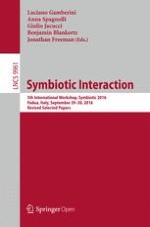1 Introduction
2 Equipment
Stimulus | Pattern sequence | Duration | Overlap | Amplitude |
|---|---|---|---|---|
#1 | [C7, D7] [C6, D6] [C5, D5] [C4, D4] [C2, D2] [C1, D1] | 350 | 175 | 100% |
#2 | [B2, E2] [B2, B3, E2, E3] [B3, E3] | 450 | 175 | 100% |
#3 | A3 [F1, A1] [C1, D1, B1, E1] [C2, D2] [C3, D3] [C4, D4] [C5, E5] [C6, D6] [C7, D7] [C6, D6] [C5, D5] [C4, D4] [C3, D3] [C2, D2] [C1, D1] | 350 | 175 | 85% |
#4 | [C6, C7, D6, C7] [B6, B7, E6, E7] [F2, F3, A2, A3] [F6, F7, A6, A7] [F6, A6] [F6, F7, A6, A7] [F2, F3, A2, A3] [B6, B7, E6, E7] [B2, B3, E2, E3] [C6, C7, D6, D7] | 400 | 100 | 100% |
#5 | A4 [F1, A1] [C1, D1, B1, E1] [C2, D2] [C3, D3] [C4, D4] [C5, D5] [C6, D6] [C7, D7] | 500 | 400 | 85% |
#6 | A4 [F1, A1] [C1, D1, B1, E1] [C2, D2] [C3, D3] [C4, D4] [C5, D5] [C4, D4] [C3, D3] [C2, D2] [C1, D1] | 500 | 400 | 85% |
#7 | [F1, A1] [F1, A1] [A4] [A4] [] [F1, A1] [A4] [A4] | 500 | 200 | 85% |
#8 | [F1, A1] [F1, A1] [A4] [A4] [F1, A1] [F1, A1] [A4] [A4] [F1, A1] [F1, A1] | 500 | 200 | 85% |
3 Experimental Procedure and Metrics
4 Results
Stimulus | First interval | Second interval | Whole session | |||
|---|---|---|---|---|---|---|
t | M(SD) | t | M(SD) | t | M(SD) | |
#1 | 3.43* | 6.9(7.29) | 3.31* | 6.51(8.08) | 4.85* | 6.55(5.47) |
#2 | .085 | 15.12(13.71) | 0.039 | 12.3(22.38) | .255 | 13.31(14.23) |
#3 | 2.60* | 19.81(12.54) | 1.917 | 19.21(15.66) | 3.15* | 20.15(10.84) |
#4 | .28 | 13.25(11.62) | 0.77 | 14.56(11.91) | .615 | 13.8(9.49) |
#5 | 2.99* | 7.17(7.94) | 2.30* | 7.04(10.58) | 2.29* | 7.09(8.25) |
#6 | .116 | 12.21(11.37) | 1.78 | 8.99(8.79) | .847 | 10.97(8.02) |
#7 | .952 | 14.92(11.37) | 1.98 | 19.28(15.26) | 1.54 | 16.53(11.70) |
#8 | .904 | 10.59(9.42) | .152 | 12.09(12.03) | .46 | 11.56(8.87) |
